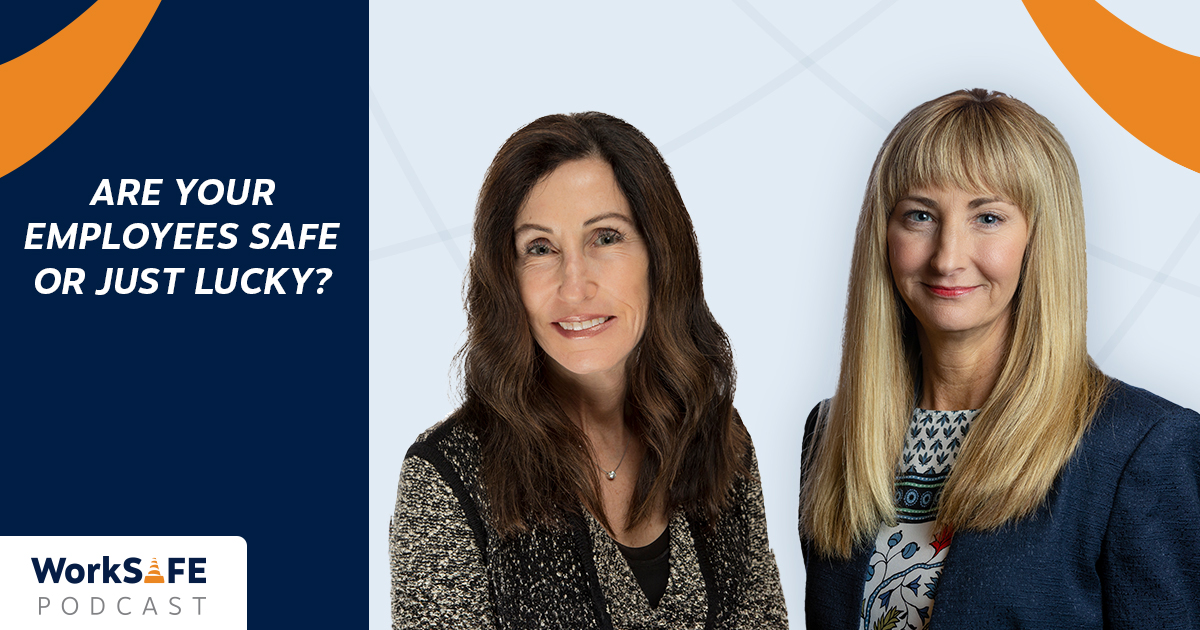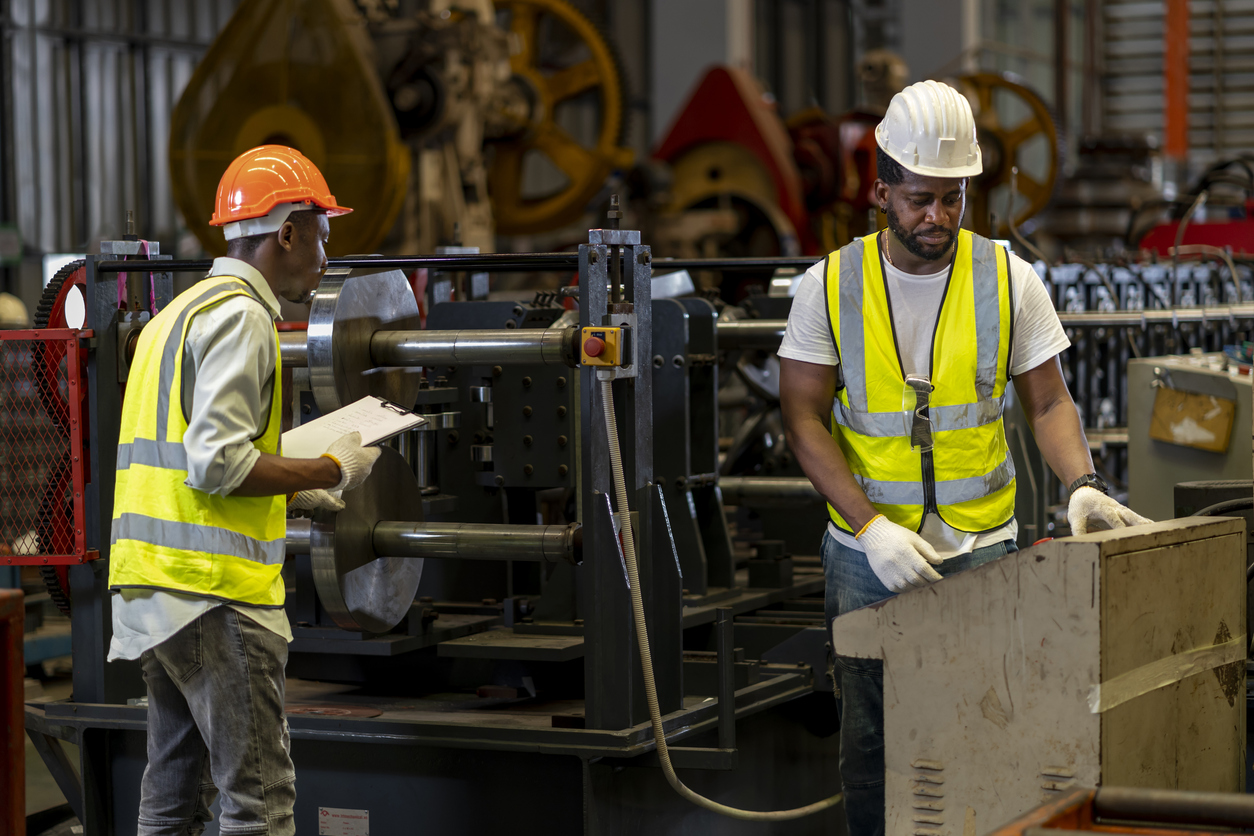Whether big or small, an organization may go several years without a significant on-the-job incident. Some people may consider them to be lucky. It’s always best to not have any safety incidents. However, this may lead businesses to gain a false sense of security. This makes it essential to measure risk exposure, or the potential for an incident to occur. Employers shouldn’t leave employee safety down to luck.
On this episode of the WorkSAFE Podcast, we are joined by Elizabeth Prazeres. She is an organizational effectiveness and change management expert at DEKRA. In addition, she has experience in organizational change, human performance, reliability and safety leadership.

First, we’ll talk about why a lack of incidents doesn’t always mean a safe workplaces. Then, we’ll explain what a systemic issue is and the impact they can have. Finally, we’ll share how employers can begin to measure and reduce risk exposure.
Listen to this episode on the WorkSAFE Podcast, or read the show notes below.
A lack of incidents doesn’t mean a safe workplace
Employers who don’t experience workplace incidents often consider themselves lucky. However, Prazeres disagrees with the idea of luck. “We have a saying that a lack of incidents does not equate to being safe,” she shared. Some workplaces truly make safety a priority. Their safety record shows this. However, other ‘lucky’ workplaces are still experiencing near misses, situations that don’t quite lead to injury or property damage, or worse – incidents that simply go unreported.
Using risk exposure as a measuring tool
Instead of using incidents to gage workplace safety, Prazeres defers to a different kind of measurement. “We think it’s a better indicator to look at what we call exposure, and those are the things that lead to an incident happening,” she shared. For example, systems, processes, and human behavior can all lead to safety risks – and be used to prevent it.
“Those are the things that lead to an incident or prevent one from happening,” she added. “Meaning if we have good systems in place and we have people doing the right things to keep themselves safe, then that’s a better indicator of how safe we are.”
Systemic issues that impact safety
For Prazeres, it’s important to look at systemic issues impact workplace safety. These issues fall into different categories, but each one can cause an uptick in risk exposure.
Employee incentives
One area Prazeres points to is how employees are rewarded and incentivized. For instance, some employers encourage employee shifts to compete with one another. They may be encouraged to produce more or get the most work done.
“That is a systemic issue that could lead to people taking shortcuts or rushing to get work done,” she explained. Problems like this increase risk exposure.
Leadership behavior
Leaders have a lot of influence in the workplace. Their behavior can also be a source of systemic issues. They give off subtle signals that impact the actions of employees. “The signals that leaders give to their workers – and they don’t have to be strong, they could be very subtle signals – that really point to getting the work done or meeting the client expectation as the number one priority.”
Workplace logistics
In her experience, Prazeres has seen even the simplest of systemic issues cause complex problems. For example, some workplaces utilize old equipment. In one situation, an employee worked with an old machine that jammed often. Under pressure to produce, they fell into the habit of clearing the jam by sticking their arm directly into the machine, a clear and serious safety exposure risk.
Another situation revealed an unusual risk exposure culprit: a microwave. An colleague noticed that their client’s employees began to rush their work around noon, despite a guaranteed full lunch hour. With just one microwave available, employees faced long wait times to heat their food, leaving less time to eat and relax. The worry and anticipation increased risk exposure.
Creating the right environment
Limiting exposure isn’t just about safety. It’s about creating a work environment where people want to be.
“One thing that we always tell clients is you cannot compliance your way to best in class,” Prazeres shared. “So it’s important to have a good foundation of systems and procedures. That’s critical. But what gets you to best in class is culture, leadership, and really creating an environment where we can have reliable performance.”
The closer the risk, the higher the risk tolerance
There can be a disconnect between layers of a business: managers, supervisors, employees. Each one carries a different role and experiences the company in a different way. People working directly with customers or industry equipment may have perspective that leadership simply doesn’t – especially when it comes to safety and risk exposure.
“The ironic thing is is that the closer you get to the work, the tolerance to risk actually goes up,” Prazeres shared. “The folks that are doing the work and are most vulnerable to getting hurt are actually the ones with the highest tolerance.”
Doing the same tasks every day can lead to complacency. Further, when there’s more stress or production demand in the workplace, safety becomes less of a priority. “They’re more likely to focus on that pressure as opposed to focusing on doing the work safely, so that connection is super important.”
Reducing risk exposure in your business
Employees have a responsibility to keep employees safe. This extends to reducing risk exposure that isn’t always clearly seen. Prazeres recommends that employers:
- Investigate serious near misses. When a near miss could have resulted in serious injury or death, it is essential to complete a thorough investigation. Less serious near misses may not warrant a full investigation, but should still be addressed.
- Separate investigations from corrective action. If a situation could have resulted in serious consequences and involved broken rules or policies, then corrective action may be warranted. But others may require changes by the employer, such as equipment replacement, technological upgrades, or ergonomic improvements. In every close call, employers need to consider not only the outcome, but also the potential for injury.
- Use the Hierarchy of Hazard Controls. Employers should measure any serious near miss against the Hierarchy of Hazard Controls. Prazeres finds there is always at least one change they can make to improve conditions and reduce risk exposure.
“There’s still common themes around the exposure and leadership, and those sort of things really come down to: how do we keep people safe?,” she shared.


